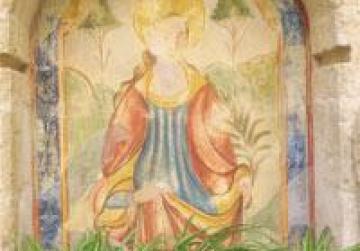Palazzo Falson getting well-deserved facelift
Fondazzjoni Patrimonju Malti has been presented with a Lm10,000 donation by HSBC's Cares For Malta's Heritage Fund, doubling the annual Lm5,000 contribution which HSBC has presented to Patrimonju over the years. In addition to helping the foundation...

Fondazzjoni Patrimonju Malti has been presented with a Lm10,000 donation by HSBC's Cares For Malta's Heritage Fund, doubling the annual Lm5,000 contribution which HSBC has presented to Patrimonju over the years.
In addition to helping the foundation with the production of high-quality exhibitions and publications, this year's donation will also go towards the restoration of a showcase for the silver collection at Palazzo Falson in Mdina.
During a recent visit to Palazzo Falson, also known as the Norman House, HSBC Bank Malta's chief executive officer Shaun Wallis and senior bank officials viewed the progress made in the restoration of the house with the chairman of Fondazzjoni Patrimonju Malti, Maurice de Giorgio.
Great care is being taken to preserve the original features of the Palazzo, which was originally a one-storey high courtyard house, and one of the oldest buildings in Mdina. The ground floor underwent other modifications in the Early Modern period.
It appears that the house was substantially larger than it is today, with the set of rooms at the back of the courtyard forming the oldest part of the house. In this area, it was discovered that an arched recess that formed a shallow niche in the wall thickness was in fact a door, and it has now been re-opened. This doorway is one of the earliest surviving elements of the Palazzo.
Palazzo Falson contains a number of features from different subsequent historical periods and styles. As the restoration works proceed, more discoveries are coming to light and new studies are being conducted.
Thus far, the work has been extensive and expensive. Parts of the building that had deteriorated over the centuries had to be restructured and secured, and all the stonework cleaned, conserved and replaced where necessary. In order to reach the standard of a professional museum, the building has been fitted with a new electrical system to support proper museum lighting, electronic ticketing facilities, CCTV, etc. Facilities and services will also include floor plan guides to the museum, a gift shop and a panoramic café. The restoration of the original mediaeval hinge system of a number of doors has been carried out with the use of leather and brass, and the doors' wrought iron has been cleaned and any missing studs replaced.
All the wooden apertures have been treated for woodworm and all walls and arches have been cleaned and re-pointed with a hydraulic lime-based fill. Numerous cracked roofing slabs had to be either replaced or reinforced. At the back of the house, the fireplace in the kitchen has been restored, as well as the metalwork and ceramics of the old oven. The wine cellar was also completely restored. In the courtyard, the old broken flagstones have been removed and other worn and weathered ones have been refitted. Three wells have been discovered, and rainwater has been rerouted to them through new ceramic pipes.
The extensive works on the terrace have included cleaning the active fungus from the facing wall, removing the old cement floor and any rusting chimneys, and replacing roofing slabs. Waterproofing membrane has been laid and the wrought iron trellis has been re-installed to permit the spread of climbing plants. The belfry, which had suffered damage during the war, has now been rebuilt and the old bell restored, while the decaying stonework on the turret has been repaired and all keystones replaced.
On mounting the inside staircase, one encounters a strongroom, the doorway of which has been widened and the concrete floor within removed. Its window has been enlarged and the metalwork on the old gate has been cleaned and conserved. This room will serve as a showcase for some of the magnificent objects from the 800-piece silver collection. On the landing, the original old opening has been reinstated and an additional window onto the terrace was put in. The soffits of the Sale Nobili had suffered damage from water seepage but have now been restored, re-stained and varnished, as well as treated against woodworm.
Works in the library have been painstaking. Upon taking possession of Palazzo Falson, Patrimonju found that the books had been liberally sprinkled with DTT for protection purposes. This meant that the approximately 4,500 books had to be carefully dusted, at times leaf by leaf. All the books have been relocated to Palazzo Vilhena in the exact same sequence as they were displayed in Palazzo Falson and duly catalogued. Galvanised metal supports have been installed under the original shelving, which has been repainted and refitted. The floor of the library was subsequently lowered and re-tiled, and old parquet has been put in.
Through the library one can enter into the chapel, which has been re-tiled with traditional Maltese tiles and the fireplace within has been restored. The ceiling has been timbered, while the soffit of the inner chapel room has been re-designed and repainted.
The work is by no means over - different specialists are still hard at work on the restoration of the 45 collections. Fondazzjoni Patrimonju Malti is looking forward to the opening of this historic house-museum and to share with the public the wealth within this extraordinary treasure-trove.